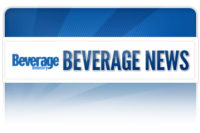Healthy beverage sales to gain ground this year
Healthy soft drinks will account for half of global soft drink retail sales this year, Euromonitor reports

Market research firm Euromonitor International, Chicago, released new data on the health-and-wellness industry, which it reports has grown by 6.75 percent in current value terms to reach $774 billion this year.
“Healthy food and beverages are once again outperforming their non-health-and-wellness counterparts,” said Ewa Hudson, global head of health and wellness research at Euromonitor International, in a statement. “Healthy soft drinks will account for half of global soft drink retail sales in 2014.”
In particular, naturally healthy ready-to-drink (RTD) tea will grow by $14.5 billion between 2014 and 2019, the market research firm reports. This is nearly $2 billion more than the energy drinks category, it notes.
“Driving the growth in health and wellness are emerging markets, adding 87 percent of absolute growth between 2009 and 2014,” Hudson said in a statement. “Despite this, developed markets still account for 60 percent of total global health-and-wellness retail sales. These markets should not be overlooked and instead should be considered an innovation hotspot promoting a more personalized approach to nutrition, with a focus on areas such as brain and vision health or food intolerance.”
In related news, Euromonitor released a new e-book identifying the Top 5 soft and hot drinks trends in six countries throughout the Middle East and North Africa. The Middle East/North Africa region will see 8.6 percent year-on-year forecast growth in healthy beverage categories compared with 2.9 percent growth in the carbonated beverages category because of campaigns against sugary drinks led by the ministries of health. Key players within the soft and hot drinks market also are being adventurous in terms of packaging innovation, which is driving sales in struggling economies within the region, it reports.
Healthy drinks have experienced increased popularity in Saudi Arabia, the United Arab Emirates, Iran, Morocco, Tunisia and Algeria because of consumers’ interest in healthy lifestyles. Also, with the growing concerns regarding the quality of tap water in Tunisia and Iran, Euromonitor has seen demand for bottled water. Additionally, low-calorie carbonated and non-carbonated drinks are growing as consumers face increasing concerns about obesity, it reports.
Energy drinks still are very popular in markets such as Saudi Arabia, Tunisia and Algeria. Due to the ban of alcohol in Saudi Arabia, energy drinks often are seen as a substitute leisure drink because of their high caffeine content, it notes. In Tunisia and Algeria, domestic brand strategy is focused on providing energy drinks at lower price points, as consumers still are likely to purchase these products despite the health warnings. Thus, energy drinks are big winners with growth in both volume and value in these countries, it says.
Packaging in the Middle East/North Africa region is seeing new innovation through product development and environmentally friendly bottle design. Slim cans, mainly used for “trendy” energy drinks, have successfully changed the look of the carbonates market in 2014. Furthermore, Saudi Arabia’s growing demand for convenience has led to an increase in demand for impulse, single-serve drinks. The model of these RTD, on-the-go bottles also was adopted by key players in Morocco and Algeria, it notes.
Looking for a reprint of this article?
From high-res PDFs to custom plaques, order your copy today!




